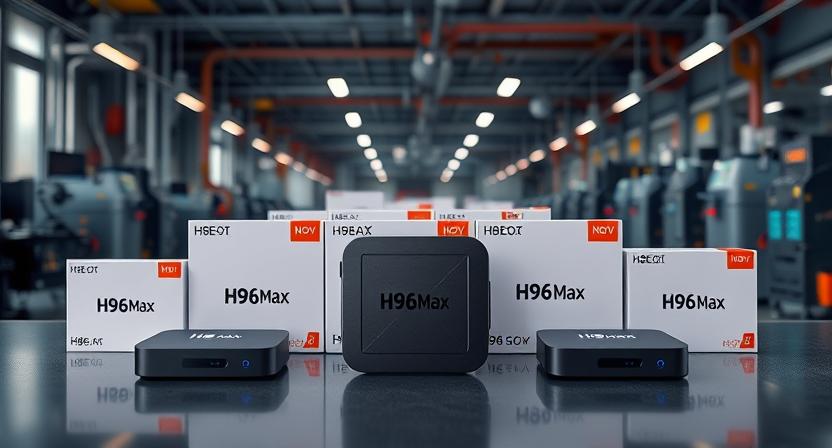Transforming Broadcast Media: The Impact of Android TV Boxes on OTT Evolution
In an age defined by digital transformation, the Android TV Box for Broadcasting Companies has emerged as a core technology driving the future of OTT content delivery. As global audiences increasingly shift toward streaming-based consumption, broadcasters face mounting challenges to provide flexible, data-driven, and cost-effective distribution models. Android TV Boxes serve as the bridge between traditional television infrastructure and modern streaming platforms, enabling broadcasters to maintain competitiveness while scaling to new markets.
1. Bridging Traditional Broadcasting and OTT Streaming
For decades, broadcasters relied on satellite transmissions and cable systems to deliver entertainment to households. However, as consumer expectations evolve, audiences demand on-demand, interactive, and mobile-accessible experiences. Android TV Boxes have revolutionized this ecosystem by offering an efficient pathway for transitioning from linear broadcasting to IP-based streaming. With Android’s flexible operating system, broadcasters can integrate their proprietary apps, OTT Android Solutions, and real-time content management systems directly into the platform.
This hybrid model not only maintains compatibility with legacy systems but also introduces scalability, allowing broadcasters to target niche audiences, regional networks, and international markets simultaneously. The result is a powerful, unified OTT ecosystem that connects broadcast infrastructure with modern streaming technologies.
2. The Role of Android TV Boxes in Network Scalability
Scalability remains one of the most critical aspects of modern broadcasting. Android TV Boxes powered by processors such as Rockchip RK3588 or Amlogic S928X can handle massive data loads while ensuring ultra-low latency and seamless playback. Their support for 8K decoding, HDR10+, and adaptive bitrate streaming ensures that broadcasters can deliver high-quality content consistently across global audiences.
Beyond playback performance, these Smart Android TV Box systems support distributed content management, allowing networks to deploy localized servers or micro-nodes for regional content caching. This ensures that users experience reduced buffering, faster start times, and enhanced playback reliability, even during large-scale live events.
3. AI-Driven Personalization and Viewer Insights
Artificial intelligence integration in Android TV Boxes has transformed how broadcasters analyze and respond to viewer behavior. AI algorithms collect anonymized data to predict user preferences, automate recommendations, and adjust content delivery based on demographics or time zones. This allows broadcasters to tailor their programming strategies dynamically, creating personalized experiences that improve retention and satisfaction.
Additionally, the integration of machine learning in OTT Android devices enables automated quality control. These systems detect playback issues, network disruptions, and bitrate inconsistencies in real time, ensuring a seamless viewer experience. By combining AI analytics with OTT automation, broadcasters gain the insights needed to optimize their operations and expand audience reach effectively.
4. Enhanced Monetization and Interactive Features
Android TV Boxes redefine monetization opportunities for broadcasters. Through Android’s app ecosystem, networks can implement multiple revenue streams, including subscription plans, pay-per-view events, and AI-powered targeted advertising. Integrated programmatic ad systems ensure personalized ad placement, improving engagement and advertiser ROI.
Interactive features such as real-time voting, polls, and second-screen synchronization also enhance engagement. Viewers can interact with live shows or commercials, providing valuable data and increasing participation. These capabilities make the Android Box Platform not just a content delivery device but a strategic engagement tool for media companies.
5. Global Reach and Localization
The global Android ecosystem supports over two billion devices, offering unparalleled distribution potential for broadcasters. Android TV Boxes can be customized for regional preferences, including localized interfaces, multi-language subtitles, and geo-targeted recommendations. This adaptability allows networks to penetrate new markets while maintaining content relevance and brand consistency.
Partnerships with OEM and ODM manufacturers also enable broadcasters to develop branded devices preloaded with exclusive apps and tailored firmware. Such collaborations strengthen global recognition while streamlining deployment across international markets.
6. Sustainable and Efficient Broadcasting Operations
Sustainability is increasingly vital for global broadcasters. Android TV Boxes built with energy-efficient ARM architectures reduce power consumption while maintaining performance. OTA (Over-the-Air) updates extend device longevity, minimizing e-waste and reducing total cost of ownership. These sustainability-focused features align with global environmental standards and corporate ESG initiatives.
Remote management platforms allow centralized monitoring, firmware control, and analytics collection. This ensures network consistency across thousands of deployed devices, making operations more efficient and reducing maintenance overhead for broadcasting companies managing distributed OTT infrastructure.
7. The Future of Intelligent Broadcasting
As OTT continues to shape the future of entertainment, the Android TV Box for Broadcasting Companies stands at the forefront of media evolution. It unites AI-driven content delivery, advanced scalability, and global accessibility into one smart, flexible ecosystem. The Android platform empowers broadcasters to stay agile and innovative amid the industry’s digital transformation.
Partnering with a reliable OEM/ODM manufacturer like H96 Max ensures long-term success. As a global leader that ships over 5,000,000 Android TV Boxes annually, operates 50+ worldwide warehouses, and supports 2,000+ OEM/ODM projects, H96 Max offers broadcasters the reliability, scalability, and innovation necessary to thrive in the OTT broadcasting era.
Ready to evolve your broadcasting strategy? Partner with H96 Max today and experience the future of Android-powered OTT content delivery for global media success.
READ MORE
Quick Links





.png)
.png)






.png)

.png)














